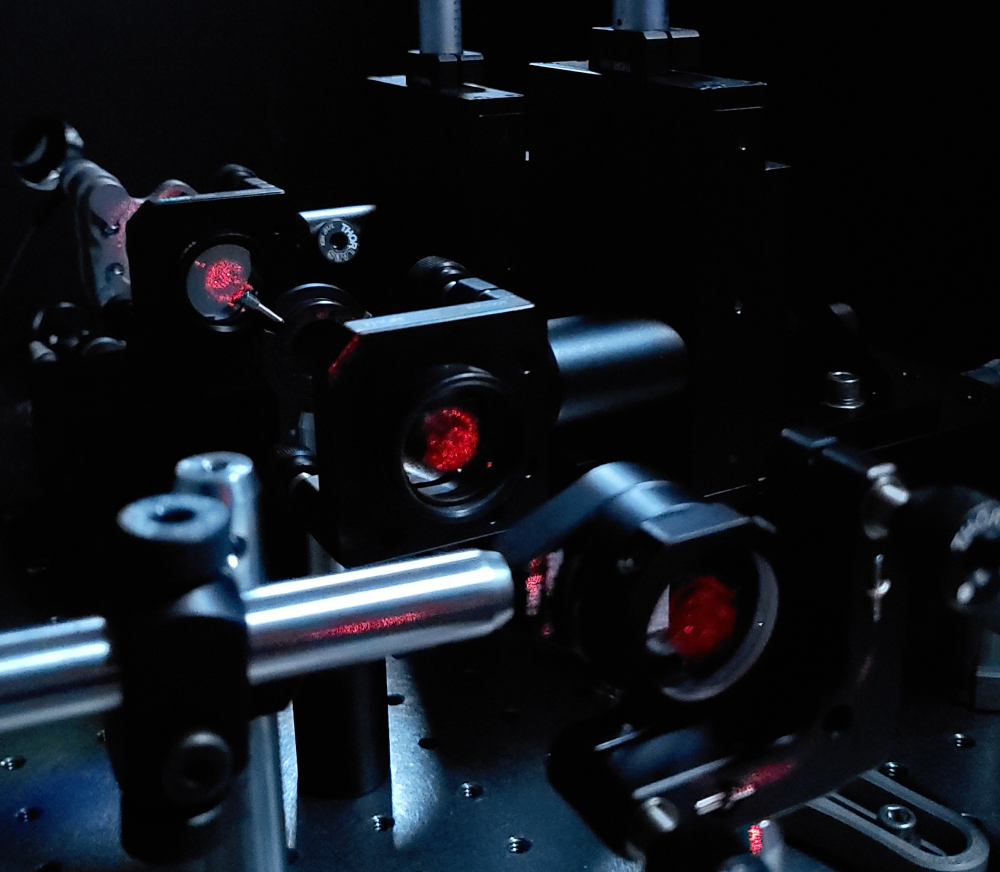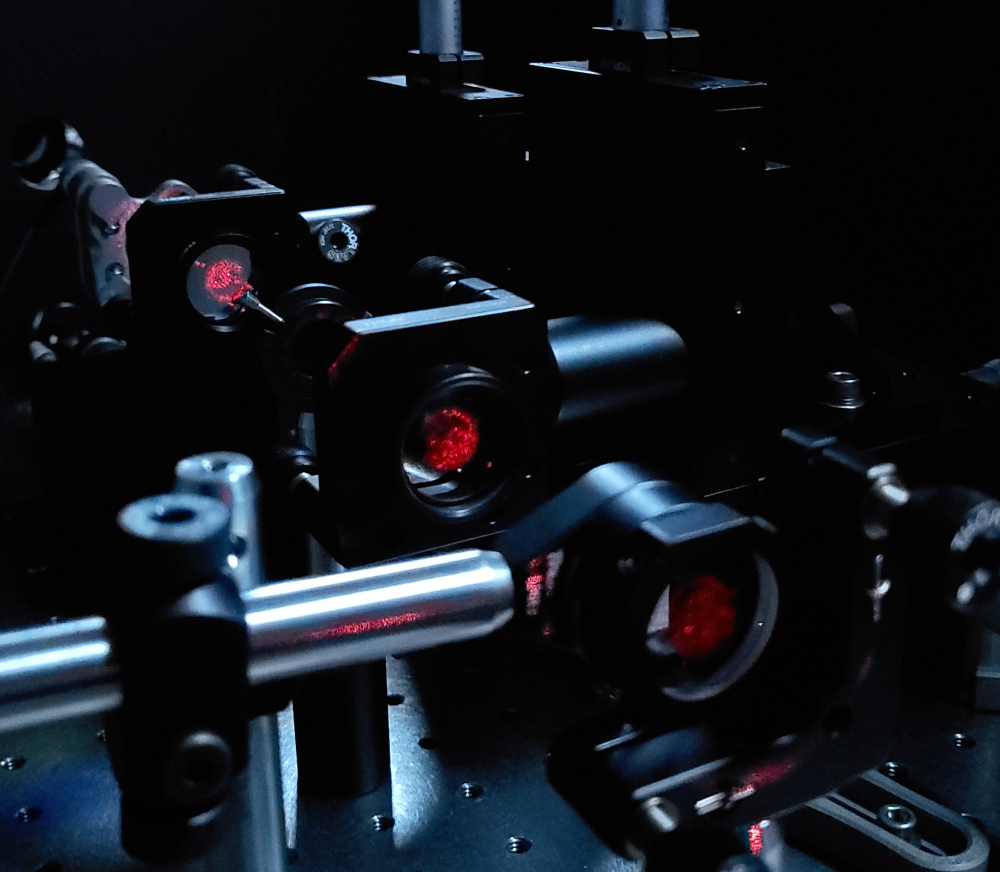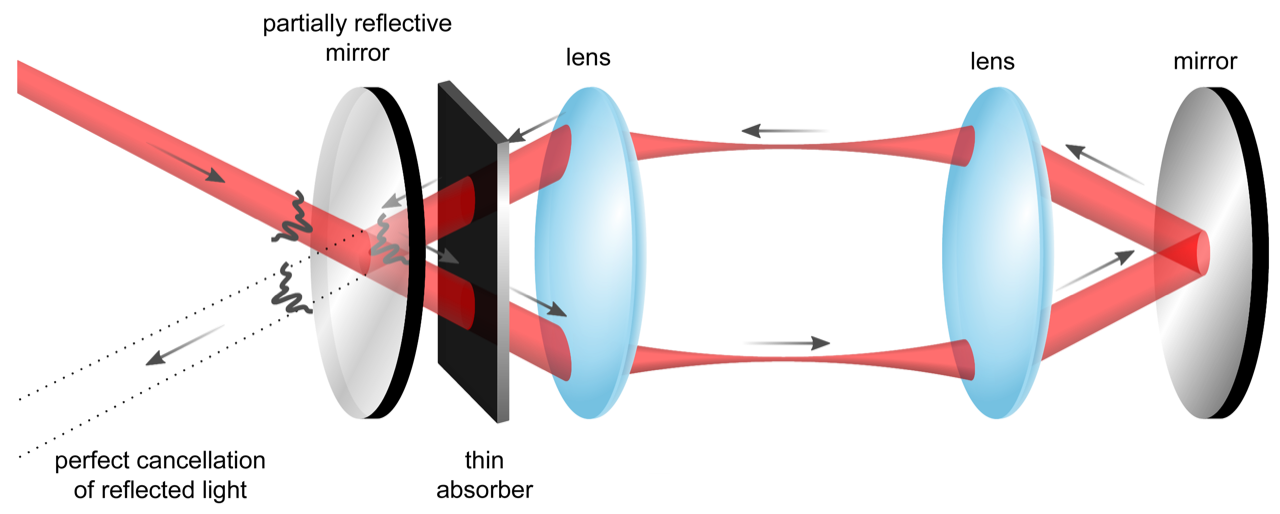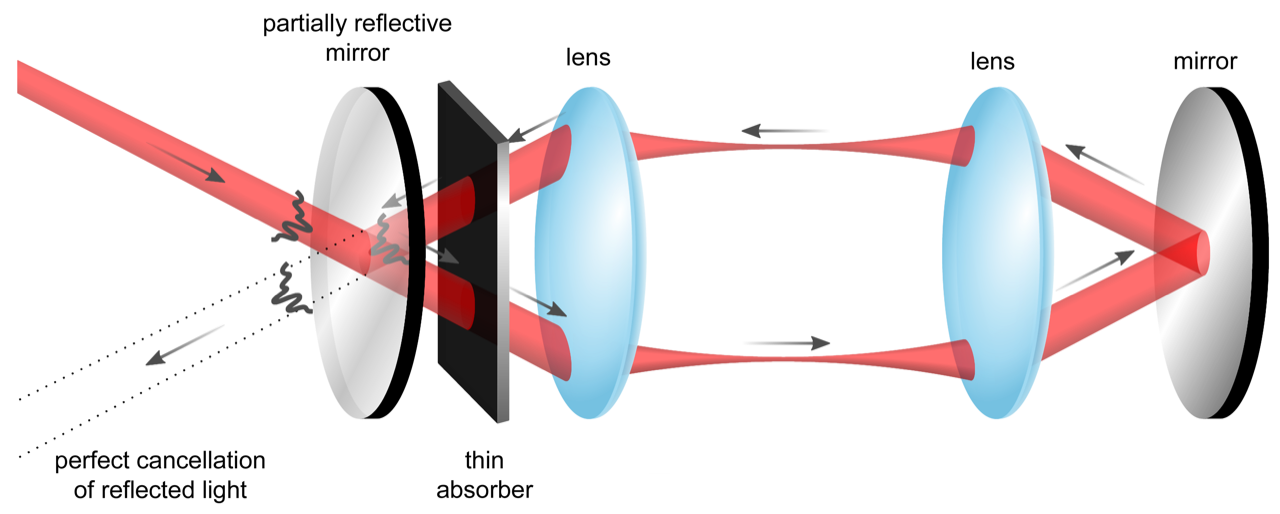New Cavity Design Soaks Up More Rays
Woolly, black sweaters absorb nearly all light that hits them, helping to keep the wearer warm. But thick, dark-colored materials don’t work for light-capturing devices, such as photodetectors and optical switches, which instead require that incoming light be absorbed in a thin, mostly transparent material. Researchers have now built a lens-and-mirror trap that captures light in a thin glass film that would, on its own, absorb a mere 15% of incident light. The design, developed by Stefan Rotter from the Vienna University of Technology and Ori Katz from the Hebrew University of Jerusalem, ensures near-perfect absorption of light coming in from a wide variety of directions [1].
Thin, weakly absorbing materials play an important role in optical applications because they allow for the use of small-sized devices without the need for complex nanoscale patterned surfaces or coatings. Traditionally, the way to coax a thin, weakly absorbing material into soaking up more light is by placing it between two mirrors. In such a resonator, light bounces back and forth, passing through the material multiple times. The material thus has a greater chance of absorbing the light. But because the front mirror is partially transparent—in order to let the light enter the cavity in the first place—some of the trapped light leaks out during each bounce.
In 2010, Douglas Stone and his team at Yale University proposed a way to avoid leakage and achieve near-perfect absorption. The approach, which built upon the traditional two-mirror cavity, aligns an incoming beam in such a way that it cancels the leaking that would be expected. The light remains trapped between the mirrors, bouncing until all energy gets absorbed by a thin material (see Viewpoint: Backward Lasing Yields a Perfect Absorber). In 2011, Stone’s colleague Hui Cao realized this approach in a silicon wafer that absorbed 99.4% of incoming light. But that device was limited to a single mode, or spatial pattern, of light. Any other pattern, such as a simple tilted beam, resulted in multiple reflected paths that cannot cancel each other.
Rotter, Katz, and their colleagues now extend the single-mode design by adding two lenses, which allow the cavity to fully absorb a large number of light modes of a given wavelength. “We believe this removes a significant obstacle to its application,” says Rotter. In their design, a laser beam falls on the front mirror, which reflects part of the light and transmits the other part into the cavity where a thin glass film is placed. The light in the cavity is steered in a circle by the lenses and back mirror so that it returns to the front mirror, where a fraction of the light would normally leak out. Here’s the trick though: the optical elements are adjusted so that this leaked light superimposes precisely on the initial reflection, creating a destructive interference effect that cancels out all the outgoing light.
The result is that the first mirror becomes completely transparent for the original laser beam and reflects none of it. Thus, the beam enters the system in a one-way path and becomes trapped, completing multiple round trips between the mirrors with nowhere to go besides being absorbed in the thin glass film.
To test the effectiveness of their design, the researchers shined a 633-nm-wavelength laser at their cavity and recorded the total light reflecting back—a direct indicator of how much light the glass film absorbed. “Everything that doesn’t get reflected from the cavity must have been absorbed inside of it,” explains Rotter. The team simultaneously tested more than 1000 modes by passing the light through a modulator that generated a speckled pattern with a yin-yang shape. Almost no light reflected out, implying that the glass absorbed all the modes. The absorption level was above 94%, with some modes being absorbed by as much as 98%. By comparison, the glass film without the cavity would only absorb 15% of incoming light. The team also showed that the design can effectively absorb light that is varying in time as a consequence of air turbulence or temperature variations.
Nir Davidson, an experimentalist who works on self-imaging cavities at the Weizmann Institute of Science in Israel, says “Katz and Rotter understood that you could use a cavity’s properties to extend from one or two modes to a thousand modes. This is very nice work.” He adds that the jump from one mode to many pushes the technique much closer to being a useful tool.
According to Rotter and Katz, the design could be of interest in astronomy, where such cavities could help detectors capture weak signals, such as faint starlight coming through the turbulent atmosphere. The cavities could also benefit future light-powered switches and optical computer components.
–Rachel Berkowitz
Rachel Berkowitz is a Corresponding Editor for Physics Magazine based in Vancouver, Canada.
References
- Y. Slobodkin et al., “Massively degenerate coherent perfect absorber for arbitrary wavefronts,” Science 377, 995 (2022).







